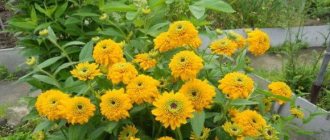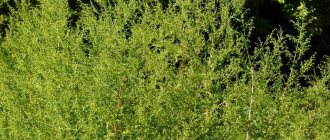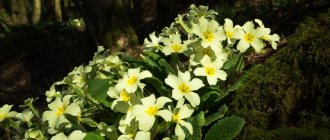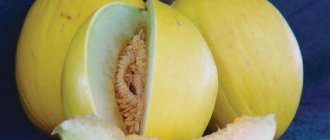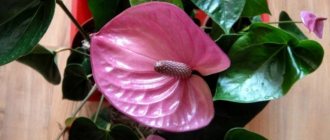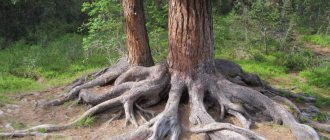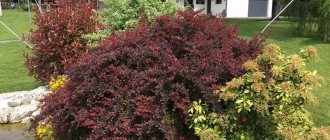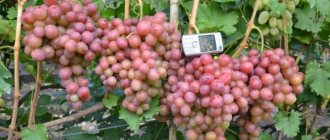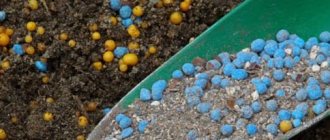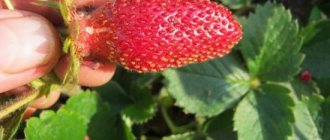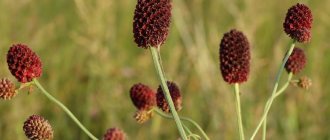The onset of autumn does not mean that life in the garden is dying down. In addition to taking care of the flowers that are still blooming, there comes a time to prepare for planting flowers before winter that will bloom next year. Is it worth planting flowers before winter? Planting plants before winter has its advantages as their seeds undergo hardening and in the spring they produce strong shoots. They are frost-resistant, immune to disease and weather conditions.
- Firstly, by sowing flowers before winter, we free up time, which is so lacking in the spring.
- Secondly, over the winter, plants from hardened seeds form a strong root system, due to which the roots grow deeper and are able to extract moisture from the deepest layers of the soil.
- Thirdly, if some of the seeds do not sprout in the spring, then it will be possible to sow them.
What flowers to plant before winter
cold-resistant varieties can be planted ; the seeds must be thrown into already frozen soil , or with slight warming they can germinate and, of course, die in the future. You cannot cover the seeds with too thick a layer of soil, otherwise in the spring it will be compacted under a layer of snow and it will be difficult for the seeds to germinate. As for the choice of flowers for autumn planting, it is extremely large.
What annual flowers are planted in autumn:
- marigold
- cornflower
- mignonette
- cosmos
- Chinese aster
- carnation
- calendula officinalis
- poppy
Which of the two-year-old flowers are planted before winter:
- forget-me-not
- daisy
- Turkish cloves
- viola
- bell
- lavender
- carnation
- delphinium
- lupine
- primrose
But this is just a small list; in fact, it is much wider. Flowers planted in autumn will delight you with their abundant blooms next year.
Sowing flower seeds before winter
The planting site is chosen to be flat so that in the spring meltwater does not wash away the seeds. Before sowing, the beds are cleared of tops of carrion and various plant debris and dug up. in the ground thicker than in spring . The germination rate of such seeds is lower; it is difficult for them to break through the soil that has become compacted during the winter. After planting, the ground is mulched with a thin layer of soil mixed with peat or humus; it can be covered with branches on top. The mulching mixture must be prepared in advance.
But even before planting, you need to prepare the land in the fall for sowing seeds, dig it and apply fertilizer. Make shallow furrows in the bed for sowing before the ground freezes. When choosing flowers for the autumn garden, do not forget about the requirements of some plants. Mostly, unpretentious plants are planted in a summer cottage.
Rudbeckia after flowering
How and when to collect seeds
Rudbeckia blooms and produces seeds in the fall. Wait for the seeds to dry on the flower, then put on gloves and carefully collect the seeds from the center of the flower, scatter them on newspaper and dry in a dry, ventilated area.
- Helenium, Brad Pitt and the Rich Bride
Perennial rudbeckia in winter
Perennial rudbeckia needs shelter for the winter, but first you need to cut off the plant debris to the very surface of the soil, and then cover the area with a thick layer of humus (5-7 cm), spruce branches or dry grass.
What to plant in the fall at the dacha
Seeds sown in autumn enable plants to bloom one to two weeks earlier. In addition, in the spring there will be less hassle with seedlings. It is better to plant the seeds in the flowerbed immediately and not replant later. In the fall, any seeds are sown more densely, taking into account the fact that not all seedlings will survive. If the plants grow too densely in the spring, they can be thinned out.
As for perennial plants, it is in any case better to sow them in the fall. Seed germination of many species of perennials requires cold stratification . Plants that require stratification include primrose, lavender, delphinium and others. Most spring-sown perennials will bloom the following year. If you plant perennial seeds in the fall and cover them with film in the spring, then very often the plants bloom by the end of summer.
Rudbeckia is one of the most famous garden plants, annually delighting with magnificent growth and sunny flowers. Its charming daisy-like flowers will attract everyone's attention. They bloom in early summer and are pleasing to the eye until the first frost. Before planting a plant, it is worth finding out information about planting and caring for perennial rudbeckia, growing requirements, varieties and varieties, of which there are really many.
Further care
Despite the unpretentiousness of the plant, in order to achieve beautiful and timely flowering, appropriate care will be required at all stages of its development.
Growing and caring for rudbeckia: video
Throughout the growing season, rudbeckia is watered systematically, but moderately. It is important not to allow the top soil layer to dry out on persistently hot days. But it is also impossible to create swampiness, lest the roots begin to rot. After irrigation procedures, they begin to loosen the soil and remove weeds. Then sawdust is scattered over the surface. This technique allows you to reduce the number of waterings and prevents the rapid evaporation of moisture.
If the site has insufficiently fertile soil, it is advisable to add humus or compost to it. Over the summer, two root feedings will be enough: the first - 2 weeks after planting the seedlings, the second - at the stage of bud formation. Fertilizers can be universal complex compounds or mullein diluted with water.
Be sure to remove periodically appearing shoots. Otherwise, it will take away the plant’s strength, which will lead to its retardation in development. After flowering, remove the faded buds along with the stems to the level of the first green leaves.
You can learn more about how to care for solar rudbeckia from the video:
Winter care: what’s special?
An important stage in the cultivation of rudbeckia is preparation for winter. In the last month of autumn, perennials are cut off completely, leaving small stumps. If the region has little snow and frosty winters, then the bushes should be covered with any plant waste from the garden (spruce branches, leaves).
Characteristics and description of the plant
The genus Rudbeckia includes 40 species originating from North America. However, only a few species with different life expectancies have found their way into our gardens. Gardeners sometimes call the plant rudbeckia.
Annual, biennial or perennial rudbeckia flowers stand out with extremely bright inflorescences. The inflorescences are characteristic baskets with yellow, brightly colored marginal ligulate flowers, the middle tubular flowers form a dark center. Flowering begins quite late, the inflorescences are large (10-15 cm in diameter), numerous. The stems grow to a height of 60-90 cm.
Description of rudbeckia
Against the background of numerous species of rudbeckia, annual, biennial and perennial specimens are distinguished, mainly differing in inflorescences. All representatives have simple or highly branched erect stems from 1.5 to 3 meters in height, covered with hard fibers. The foliage of rudbeckia is whole or dissected, rounded and elongated. Those located below are attached to the trunk with elongated petioles, the upper ones are without them at all.
The flowers are grouped in large baskets with a diameter of up to 15 cm. They are yellow or orange, but of different saturations. A distinctive feature is the darkened middle. At the end of flowering, small gray fruit boxes filled with seeds form on the plant.
Types and varieties (photo)
Rudbeckia, thanks to its easy cultivation and excellent end result, has become really popular, so breeders have developed many varieties. A characteristic feature of all species is flowering in July. Only echinacea blooms in August or later. All varieties are characterized by long flowering, the purple variety blooms until the first frost.
Below are the most popular types - perennial and annual.
Hairy
Rudbeckia hirta L. – Rudbeckia pilosa is a charming, very common species with tough, thick shoots covered with coarse hairs. The leaves are 10 cm long, lanceolate, densely serrated, pubescent, bright green. The flowers are golden yellow and look beautiful in flower beds. It grows to a height of 80-100 cm, looks great on edges and borders.
This is not a perennial, mostly biennial species; in our climatic conditions it is grown as an annual. The plant produces seeds that you can later sow yourself. Available in many interesting varieties.
Varieties of Hairy Rudbeckia in the garden can create exceptional benefits. They have golden or yellow flowers, very similar to the flowers of the Shiny Rudbeckia, but their flower baskets are much larger, almost huge - up to 10-15 cm in diameter, which makes them look like sunflowers with thin stalks.
- “Goldilocks” Goldilocks is an annual, one of the most popular and beautiful varieties. It has beautiful, golden petals, up to 8 cm wide. Blooms from mid-summer to late autumn. Stems are 60 cm high and 30 cm wide.
- "Village Gnomes" Rustic Dwarfs - a variety with flower baskets measuring 15 cm!
- "Cat's Eye" Cat's Eye - a new variety of rudbeckia, has yellow flowers with a green center.
- “Colors of Autumn” Autumn Colors – variety 80-100 cm high, petals are orange-copper, dark red at the base. Flowering period: July – September.
- "Toto" or "Becky" - low (dwarf) variety, stem height - 25-40 cm, with large flower baskets with a diameter of 8-10 cm.
- Ruddy hairy “Sonora” Sonora and “Marmalade” Marmalade – medium height.
- “Moroccan Sun” Moroccan Sun – stem height: 60-70 cm, copper-colored petals. Flowering period: July-September.
Two-color
Hairy subspecies - Rudbeckia bicolor (Rudbeckia hirta var. Pulcherrima) synonym (Rudbeckia bicolor). Many people choose it because of its more interesting colors. Bicolor rudbeckia is also said to be easier to grow than hairy rudbeckia.
This is a decorative annual plant up to 1 meter high. It is easy to grow, so it is worth expanding your collection with this species. Stems and leaves are pubescent. The flowers are extremely beautiful, black center, dark orange inside, yellow outside.
The plant prefers sunny positions, where it blooms more profusely. The species is well adapted to our weather conditions. Seeds are sown in open ground in May, the plants quickly produce stems and bloom. Flowering continues until late autumn, when rudbeckia reigns in the garden. Flower baskets have a characteristic color - ranging from yellow, orange to an interesting red and a typical dark "eye" of tubular flowers. The inflorescences are large, expressive, and look ideal on the garden.
Main plant types
Rudbeckia Golden Ball
Rudbeckia is divided into annual (biennial) plant and perennial. Each of them is represented by a large number of species. Some of them are found naturally, others are intended for growing in garden plots or in pots at home. The most common and popular varieties should be considered.
Rudbeckia beautiful or beautiful
A perennial that reaches 50-60 cm in height, with oblong, slightly rounded leaves. The edges are jagged with irregularities. The flowers are bright orange. Mainly found in wet soils of North America.
Rudbeckia is beautiful
Rudbeckia brillianti
A perennial that reaches a height of 60 cm, it is distinguished by solid, narrow lanceolate leaves. The inflorescences reach 9 cm and consist of tubular flowers of orange or dark red color. In nature, there are varieties of rudbeckia Hirta, Goldstar, Goldshturm, which have golden flower petals and a brown core.
Rudbeckia dissected
This plant reaches a height of up to 2 meters. Rudbeckia dissectata is distinguished by a highly branched horizontal rhizome. On powerful stems there are pinnately divided leaves. The inflorescence has a diameter of 10 cm, it consists of 1-3 bright yellow flowers.
Dwarf species
This is a small dwarf plant that does not exceed 30 cm in height. Most often, dwarf rudbeckia is used for growing in border flower beds, in indoor pots or on balconies and loggias. The color of the flowers (diameter up to 10 cm) can be varied: from yellow to purple-black.
Rudbeckia Dwarf species
Rudbeckia terry or hairy
A separate type of rudbeckia, which combines many varieties. The color can be varied. There are white, blue, red, yellow rudbeckia. Shoots up to 1 meter high. The plant lives no more than 2 years and reproduces by flowers. This species is distinguished by the presence of hard hair on the foliage and shoots.
The inflorescences of the basket abundantly cover the bushes during the flowering period. The diameter of the flowers is about 10 cm.
Rudbeckia hybrid
This is a large group that combines hybrids of different varieties of garden plants (hairy, glossy and spreading). The stems are hard, leafy, reaching a height of up to 70 cm. The upper leaves sit on the stem, the lower ones grow on petioles. Hybrid rudbeckia is distinguished by rather large inflorescences, the diameter of which reaches 19 cm. The flower petals resemble reeds in shape, most often colored yellow, sometimes yellow-brown representatives are found. The fruit is a small achene containing dark black shiny seeds.
Interesting fact. There are approximately 1800 pieces in one gram, and germination lasts up to 3 years.
Rudbeckia hybrid
Planting, cultivation and care
Plants are undemanding in care. Rudbeckia and Echinacea have the same requirements. This applies to all varieties and species, including perennials, although shiny rudbeckias are more capricious.
Attention! Rudbeckias need to be protected from snails!
Choosing a growing location
All species need to be provided with plenty of sun, because in partial shade plants grow more slowly and look less attractive.
Rudbeckia likes sunny, open areas and permeable soils. Plants like fairly damp places, but tolerate drought well and do not dry out in the summer. The flower can be planted near bodies of water, but it grows worse in waterlogged soil.
Reproduction and planting
The advantage of growing rudbeckia is the ease of propagation, mainly from seeds.
It is better to sow annuals with seeds. This is how they grow Bicolor Rudbeckia, which is ideal for our climatic conditions. Seeds can be sown for seedlings in boxes and then planted in a flower bed. Seedlings aged 2-3 weeks can be planted in open ground. You can buy already grown seedlings in nurseries, which significantly speeds up cultivation. Plants are planted at intervals of 30-60 cm, depending on the type or variety.
Many perennial species, R. fulgida and R. laciniata, can also be propagated from seeds sown in pots in May or June. The seedlings are planted at the end of summer in a permanent place. Before frost, the soil under the plants is mulched with a layer of bark. This perennial will bloom next year.
If you collect the seeds in the fall and store them in a cool, dry room, they should be sown in the ground at the end of April.
You can propagate rudbeckia by dividing the bushes; the procedure is performed in the spring. Divide the bush carefully so as not to seriously injure the roots of the plant.
Trimming, garter
Tall plants should be staked because they may break if exposed to wind or heavy rain.
The most important procedure is the removal of dried, faded inflorescences. To prolong flowering, it is necessary to regularly remove wilted flowers. In late autumn, the perennial should be pruned low, about 15-20 cm above the ground.
Regular removal of flower heads has many benefits:
- the plant looks attractive;
- Flowering is stimulated, the plant blooms continuously from July until autumn, becoming one of the most durable garden decorations.
Interesting! To preserve cut rudbeckia flowers longer, you should immerse the ends of their shoots in boiling water for half a minute before placing them in a vase.
Watering, fertilizing
Rudbeckia does not need special care or care. The flower should be watered quite regularly, especially in summer, when the heat lasts and there is no chance of precipitation, but watering is not necessary in spring or autumn. The plant needs to be fed if it is planted on poor soils.
If the soil is not rich in nutrients, it is necessary to apply fertilizers, preferably 2 times a year. It is enough to purchase standard, granular or gel, multicomponent fertilizers. Universal fertilizers for flowering plants are sufficient. Their use in spring and summer is enough to keep the bushes lush. Fertilization supports root development to prevent freezing.
Wintering
All presented species are almost completely frost-resistant, easily withstanding temperature changes of up to -20 degrees Celsius, and those covered with a layer of snow can withstand even more severe frosts. The shiny rudbeckia will survive the winter and be reborn in the spring. Other species are annuals but can be left in the garden. They will be a good shelter for other plants, and dried flowers look impressive under a layer of snow.
Planting in the ground and caring for plants
Hardened plants, without disturbing the earthen coma, are planted in small holes at a distance of 30 cm from each other. In clear and warm weather, the plants will take root well, and on unfavorable days, rudbeckia should be covered with spunbond or lutrasil at night. After planting, you need to compact and water the soil, mulch up to 8 cm. Compost, sawdust, any weeds and leaves, as well as manure are suitable as mulch.
Caring for rudbeckia is not difficult - it only needs moderate watering, loosening and removing weeds near young plants. Tall varieties need to be tied up so that they do not break from the wind.
Site selection and soil preparation
Rudbeckia is generally not picky about the choice of soil; it prefers clay and does not feel very comfortable in sand. It loves bright light, so choose sunny or slightly shaded places for it. Before planting rudbeckia, you need to dig up the soil, add sand and crushed stone to heavy and clayey soils, and chalk or dolomite flour to acidic soils. In addition, you can increase soil fertility with compost.
How and with what to water plants
Drought is harmful to rudbeckia; without water it withers, the flowers lose their shape, and overwatering threatens with putrefactive diseases. Therefore, you need to carefully monitor watering - moderation of humidity is very important. It is useful to water rudbeckia at the same time - in the morning or in the evening.
Fertilizer application
Rudbeckia loves mineral fertilizers in early spring, and at the end of May, if the soil is infertile, it will be useful to add a mixture of nitrophoska with potassium sulfate. In summer, the bushes are fed with a solution of manure.
What time to repot
Only perennial rudbeckia is replanted once every 3-5 years in the spring, when the soil warms up.
Does it need pruning?
Dried flowers should be removed. To prolong flowering and prevent self-seeding in the fall, when the flowers begin to fade, the inflorescences are cut back to the first leaf. When the remaining part dries, it is cut off at the root.
How to prepare flowers for winter
To prevent the roots from freezing in central Russia and northern regions, the soil is covered with leaves, dry grass or branches of coniferous plants. In winter, throw a layer of snow on the flowerbed. In the south, the plant will survive the winter without shelter.
Difficulties in growing rudbeckia
Despite its unpretentiousness, rudbeckia is still a living plant and requires at least minimal care, which includes regular moderate watering and swelling of the soil. It does not require fertilizers, but with them the flowering will be more magnificent and abundant. It is also advisable to weed flower beds, as weeds absorb nutrients.
The downside is that most varieties are not cut to create bouquets and flower arrangements; rudbeckia is only suitable for growing in the garden.
Application in landscape
In the summer, rudbeckia looks great in flower beds, and in the fall it definitely dominates over asters and other autumn flowers. Its intense, large flowers are ideal for rustic arrangements and are gradually appearing in modern arrangements. The plant looks great in every garden, in harmony with other plantings.
Rudbeckia is a flower crop native to North America. The crop has many varietal varieties, so every gardener can choose the most suitable species for himself. The flower is very unpretentious and does not require careful care. Therefore, even a beginner can cope with its breeding. And the information contained in the article: growing rudbeckia from seeds and when to plant will help you deal with it faster.
Rudbeckia in garden design
In the garden, you can plant rudbeckia anywhere (along the fence, on the sides of paths, near buildings), since it can decorate any corner. These sunny perennials look great in compositions and individually in a flower bed. Tall specimens are usually planted in the background of the flower garden, while short ones are planted in the front or used as borders.
Rudbeckia goes well with many varieties:
- asters;
- chrysanthemums;
- monards;
- cultivated daisies;
- echinacea;
- cereal crops.
Growing rudbeckia is not difficult, even a beginner can handle it. You can enjoy these flowers until late autumn, when most ornamental plants have already faded.
Rudbeckia flowers description, photo
This beautiful representative of distant lands has successfully adapted to the climatic conditions of Russia. The plant acquired its name in honor of the Swiss Rudbeck family. The family studied botany and made a significant contribution to this branch of science.
The variety belongs to herbaceous plants of the Asteraceae family and can be cultivated as an annual, biennial or perennial species. In her homeland they call her “Black-Eyed Suzanne”. Flower growers love the plant for the bright colors of the inflorescences and rich flowering. The inflorescences are usually colored straw and orange. The culture began to be cultivated in Europe in the 16th century, when the Spaniards brought its grains to the continent.
The flower is a representative of tall crops, the stems of which can reach from 0.5 to 3 m in height depending on the variety. Three-meter giants, unfortunately, are found only in the wild. The trunks of the bush can be straight or branched. The foliage size can vary from 5 to 20cm. The shape of the leaves can be oval or elongated. In the lower part of the stem, the foliage has small petioles, and directly near the buds they adhere more tightly to the shoots.
The inflorescences are quite large in diameter and can reach 15 cm; the inflorescences have baskets. Depending on the variety, the petals of the bud can be arranged in 1, 2 or more rows. Varieties that have many rows of petals are called double.
Biological description and external characteristics of dissected perennial rudbeckia
This herbaceous plant, belonging to the Asteraceae family, is native to North America, where it can still be found in the wild. Externally, the flower looks like a fairly large shrub (its height on average ranges from 50 cm to 2 m), with simple or branched, rigidly pubescent stems. The type of leaves is entire, pinnately dissected or pinnately divided, the shape is oval or ovoid. The length of the leaf plates ranges from 5 to 25 cm.
The inflorescences have the shape of baskets, the size of which is about 15 cm in diameter, and the color is heterogeneous. The outer petals are usually yellow, and the color of the “middle” can be yellow, orange, brown and even dark purple, almost black. The fruits are oblong achenes with shiny, small seeds of a dark gray color. The germination of seed material lasts for 2-3 years.
The first settlers who settled the North American continent gave the plant the nickname “black-eyed Susanna” because of its black center, contrasting with the bright yellow “frame”. Later it was replaced by another name, “sun hat”, emphasizing the spectacular color of the flower.
The beautiful, “sunny” inflorescences of rudbeckia look excellent in group and single plantings and can be an excellent decoration for any mixborder or flower bed. Flowering period: from mid-summer (July) to late autumn (late October).
You can see what climbing morning glory flowers look like in this article.
How to grow Ipomoea can be found in this article.
How to properly plant Cosmea seeds is described in detail in this article here: https://2gazon.ru/ozelenenie/cvety/sroki-i-osobennosti-vyrashhivaniya-kosmei-iz-semyan.html
Types and varieties
In total, about 40 botanical varieties are known. However, no more than 6 of the most popular species are grown as a garden plant. The most popular are:
- Rudbeckia Laciniata is a perennial species. Among gardeners it has the nickname “Golden Ball”. It has straight stems up to 2.5 m high. The roots are branched, the leaves are elongated. Large carved foliage adorns the lower part of the stem. Terry inflorescences up to 8 cm in diameter have a juicy sunny hue. This species does not form seeds, and reproduction is only possible by dividing the bush. Unpretentiousness allows the flower to grow in arbitrary conditions and on any soil.
- Rudbeckia Hirta is the most popular annual species. Despite the fact that it is considered an annual, some representatives of the species are able to survive the winter cold and delight with flowering the following year. The inflorescence of the bud is simple and of the usual straw color. The core is slightly embossed and chocolate-colored. The height of the stems can reach 30-100 cm.
- The variety "Marmalade" is the most favorite among flower growers. The height of the stems is 50-60cm. The inflorescences are simple, large, deep orange in color.
- The variety "Goldilox" is no less popular among fans of the variety. The bush can reach a height of 50 cm; lush semi-double inflorescences adorn the stems. The core of the bud is dark, almost black, and the petals are deep orange.
- Rudbeckia Nit >Informative! Due to the fact that Rudbeckia and Echinacea are quite close, in the West, breeders have bred a hybrid variety - Echibeckia. In our territory, no one knows about this variety.
Popular varieties
Unpretentiousness and ease of care, together with excellent decorative qualities and duration of flowering, have made perennial rudbeckia very popular among gardeners. Currently, more than 300 varieties of plants are used in professional and amateur floriculture, with different colors and shapes of inflorescences, having different heights and crown structures.
Some of the most famous species growing in our country include:
Rudbeckia radiata (shiny)
It has bright yellow flowers, with a black convex center and a diameter of 9 to 12 cm. The height of an adult plant is up to 70 cm. It blooms from July to September. The flower owes its name to the leaves, which have a glossy texture and therefore look shiny. This variety does not need tying. Well suited for group and single plantings.
Varieties:
- Goldstorm;
“Goldstorm”
- Goldstar.
"Goldstar"
Rudbeckia dissected
A characteristic feature of this species is the magnificent inflorescences of a golden yellow hue with petals arranged in several rows, which is why they look more voluminous and lush. The average flower size is about 10 cm. The height of the bush is up to 2.5 m. Common varieties:
- Golden ball.
“Golden Ball”
Flowering: from July to October. Due to its high growth, this variety of rudbeckia needs support, which can be provided with stakes or sticks of the appropriate size. Its big advantage: good frost resistance, so it does not need to create shelter for the winter.
But you can see what Lavatera flowers look like in the photo in this article.
Rudbeckia hairy
It got its name from the fluffy hairs covering the stems and leaves. Height - up to 1 m. Flowers - double or simple, up to 60 cm in diameter, with a brown convex core, which remains on the plant after the petals fall. Their color can be very diverse: from light yellow to golden or orange.
Varieties:
- Goldflame;
“Goldflame”
- Meine Freude;
“Meine Freude”
- Riesenfreude;
- Mocha.
“Mocha”
Some people mistakenly believe that the lifespan of this variety of rudbeckia is no more than 2 years. This is misleading, since it was originally bred as a perennial plant.
Rudbeckia glossy
It has large flowers with long yellow petals and a green center and shiny, light green leaves with a large dissection. Tall. Maximum height – 2 m. Photophilous, frost-resistant. It blooms, like most other representatives of the species, from July to September.
Varieties:
- Golden Umbrella;
“Golden Umbrella”
- Autumn sun.
“Autumn Sun”
Rudbeckia is beautiful
A small, compact plant, the height of which in adulthood does not exceed 60 cm. The flowers are orange, with a dark brown center, up to 10 cm in diameter. The structure of the flower is single-row.
“Rudbeckia is beautiful”
Rudbeckia purpurea (pink)
It is characterized by increased cold resistance. Prefers areas with good lighting. The inflorescences are large, lilac-red, and their appearance resembles a garden chamomile. Grows up to 90 cm.
Varieties:
- Cherry brandy;
“Cherry brandy”
- Echinacea purpurea;
“Echinacea purpurea”
- Terry hat;
“Terry hat”
- Compact;
“Compact”
- King;
"King"
Rudbeckia gianta is a very large plant with bluish-green leaves covered with a waxy coating. The flowers are yellow, large in size with a very prominent dark center. They have high drought and frost resistance. Excellent for cutting.
“Giant Rudbeckia”
Growing rudbeckia from seeds
Growing seedlings is a very easy task. Propagation is available in two methods: seedlings for annual varieties and planting perennial seeds directly into open ground. Sowing grains is the easiest and most popular way to propagate a crop. All varieties, except terry ones, can be propagated by seed. Seed material can be purchased at specialized flower shops. If the flower has already been grown before, you can stock up on seeds yourself.
When to plant seedlings
The seedling method is the most reliable, as it guarantees good germination. Before you start growing rudbeckia from seeds, you need to determine the sowing time. It is recommended to sow rudbeckia seeds for seedlings in the second half of February or early March.
Preparing soil and containers for seedlings
As a container for seedlings, you can use both special containers and any available container (disposable cups, flower pots, etc.). An excellent solution would be to sow the seed in peat cups or tablets. The substrate for growing young plantings should consist of sand and peat. Before sowing, it is necessary to carry out a soil disinfection procedure. You can calcinate the mixture in the oven or steam it in boiling water. If the steaming method was used, the soil should be allowed to dry slightly.
How to sow seeds correctly
It is recommended to sow 1-2 grains per small container. Small depressions are made on the surface of the soil and the grains are placed there. If grown in wide containers, sowing is carried out along grooves located at a distance of 10-12 cm from each other. The top of the planting is sprinkled with a small layer of nutrient substrate and moistened. To prevent washing out of crops, use a spray bottle to moisten the soil. For irrigation, use spring or settled water at room temperature.
Seedling care
The crops are covered with glass or plastic wrap and left in a warm place. To hatch, rudbeckia seeds require an air temperature within 22 degrees. At lower temperatures, grain growth will slow down. And higher temperatures will cause the shoots to stretch and weaken.
Seedlings do not tolerate waterlogged soil. Excessive humidity provokes the development of such a dangerous disease as blackleg. Therefore, it is extremely important to ventilate crops daily and remove accumulated condensation.
If the temperature conditions are observed, seedlings appear in 10-14 days. After the emergence of seedlings, the cover is removed from the containers. The container is placed in a lighted, well-ventilated place. Provide regular moderate watering.
If the grains were planted in a large container, then after the formation of 2-3 full-fledged leaves, the seedlings are picked. It is better to dive directly into individual containers. In early May, seedlings begin to harden. By the second half of the month, the seedlings should get used to the open air.
Plant propagation
Annual species of rudbeckia reproduce using seeds. Perennials can also be propagated by dividing the rhizomes. When propagated by seeds, sowing takes place in early spring, late March or early April.
To do this you need:
- Prepare containers with a mixture of peat and sand. Since rudbeckia seeds are very small, they are sown on top of the substrate and lightly sprinkled with earth on top.
- Next, you need to cover the container with the seeds with film or glass and place it on the windowsill.
- Watering is done regularly using a spray bottle.
- It is also worth airing the seeds, sometimes removing the film or glass for a short period of time.
- The temperature in the room where rudbeckia is grown should not be less than 18 degrees.
- After 3 weeks, shoots should appear, after which the greenhouse is removed.
- The container is placed in the brightest place for further germination.
- Watering should be regular and plentiful.
It is best to choose a warm period for planting in open ground, when the ground is already warmed up. The middle or end of May is suitable for this. Seedlings are planted in prepared holes at a distance of 30 cm.
Reproduction by dividing the rhizome occurs when the perennial is transplanted.
To do this, after abundant watering, the bush is carefully dug up. The rhizome is divided into several parts and planted in pre-prepared holes in a bright sunny place. It is advisable to carry out this procedure in early or mid-May.
When and how are seedlings planted in a flowerbed?
In order not to injure young shoots, it is important to correctly determine the time when to plant in the flowerbed. It is important to plant after the threat of return frost has passed. And for each region this is a different time. Before planting, it is recommended to check the long-term weather forecast. This will be an additional safety net against nighttime temperature drops.
Do not neglect shelter for young plantings. The covering material can be film or non-woven fabric. After the sprouts have formed a root system, they are no longer in danger of lower temperatures and can safely tolerate a drop in temperature to -5.
The planting scheme depends on the specific variety. Low-growing varieties can be planted at a distance of 30-40 cm, while tall varieties require a distance of up to 70 cm. With this technology, the plantings will have enough light and space to form a large flowering bush. Closer planting can lead to the death of young shoots. After all, the culture has quite voluminous forms and needs space for full development and abundant flowering.
The soil should consist of an organic substrate, sandstone, chernozem soil. If possible, you can add a mineral-organic complex. The planting depth is kept the same as in containers. By deepening the sprouts, you can provoke a slowdown in growth, as well as rotting of the lower part of the stems.
In order to provide plantings with nutrients and to create favorable growth conditions, the soil around is covered with a mulch layer. It is recommended to use rotted compost. Make a layer of mulch about 10 cm thick.
Varieties: charming sunshine in your garden
Let's consider popular varieties of annual and perennial rudbeckia. Annual plants are charming flowers that develop and bloom in only one year. To get the same plant next year, you will need to collect seeds and grow annual rudbeckia through seedlings. Perennial specimens delight the eye for many years.
Cappuccino
Refers to the species of hairy rudbeckia . The straight, branched and densely leafy stem of the annual plant reaches a height of 40 cm. The flowers are large, painted in 2 colors. Reed flowers are orange-yellow, tubular flowers are coffee red. A ring is clearly visible in the center. The inflorescences reach a diameter of 8 cm.
Flowering is abundant, but from the second half of summer. It pleases with joyful reflections until late autumn. Prefers well-nutritious, sufficiently moist soils. When choosing a location, you need to stay in a well-lit area.
Cappuccino - unusual and original colors delight the eye and create a festive mood
Cappuccino is used to decorate borders; the flowers look beautiful in single plantings, in flower beds and flower beds.
Various varieties of rudbeckia can be planted on the site. And if you combine them with a perennial aster in a solitaire design, or plant them against a hosta background, you will get a bright spot that will pleasantly please the eye on gloomy autumn days.
Marmalade
A beautiful, elegant, annual plant of the Asteraceae family. During the growing season, it forms a large number of flower stalks on voluminous bushes. The leaf blades are densely covered with hairs, the stems are rigidly pubescent, growing vertically upward.
The bright color of the inflorescences-baskets attracts attention. In addition, the flowers of the Marmalade variety are large : above the convex center, yellow-orange petals beautifully fall apart in different directions, as if floating.
Marmalade is used in the design of borders and mixborders, and is good for cutting . Can be used as solitary plantings on the lawn. Flowering continues all summer, right up to frost.
Marmalade - a bright sun of yellow-orange flowers decorates a spreading bush
An unpretentious plant prefers areas in direct sunlight . If planted in partial shade, the plant will tolerate this, but the flowering will not be as vibrant. It is preferable to grow in fertile, well-drained soils with neutral acidity.
The variety is resistant, adult specimens tolerate light frosts. To get earlier flowering, it is recommended to plant the Marmalade variety through seedlings or sow seeds before winter.
Rudbeckia has good seed germination; if the conditions are met, they germinate within a week.
Moreno
Herbaceous, perennial plant, with heavily pubescent stems. It is also called rudbeckia pilosa. The variety is characterized by early flowering and pleases the eye with dark red sunflowers from the second half of July to September. It can bloom right up to frost.
Recommended for creating compositions in pots and containers . It easily tolerates transplantation and quickly adapts to a new place. Needs moderate watering.
The charming dark red flowers of the Moreno variety are eye-catching. They exude warmth and tenderness
It is better to plant in an open sunny area. Prefers cultivated, fertile soil, does not like clay. When growing the variety, you should know that Moreno does not like drought , so you need to monitor the soil moisture daily.
Prolongation of flowering is facilitated by timely removal of faded flowers . After the plant fades, the bush does not lose its decorative effect. Until late autumn, a green rosette of leaves rises above the surface of the earth, and beautiful convex pedicels sway on the stem under a gust of wind.
It is recommended to plant seedlings in March , and it is recommended to transfer grown plants at the end of May, when the soil warms up. Propagates well by seeds.
Amber
A medium-sized herbaceous plant of the Asteraceae family. The stem of the plant is densely covered with numerous hairs, reaching a height of 60 cm. The Yantar variety has gained its popularity among gardeners because it is resistant to prolonged drought and is not affected even by a serious drop in temperature. The variety is best grown in open sunny areas.
Variety Amber. Indeed, the plant looks like drops of amber
In mid-July, basket-shaped inflorescences appear on long peduncles, reaching 10 cm in diameter. At the edges, the reed flowers are painted golden yellow. Brownish-purple tubular flowers are located on a convex receptacle.
Seeds for seedlings are sown in the first ten days of April, and the seedlings are transferred to the ground at the end of May. Seedling planting pattern: 20x25 cm. The Yantar variety is characterized by long flowering. Bright flowers, replacing each other, delight the eye for 2 months. In landscape design, group plantings are used; massive plantings can be used when placed on the lawn.
Golden ball
For many of us, this plant brings back joyful memories from childhood, when behind the fence of ourselves or our neighbors we could see an unpretentious and in its own way beautiful plant - golden balls of rudbeckia. For many years, rudbeckia was undeservedly forgotten, and only recently the plant’s popularity is once again gaining momentum.
Golden ball is a perennial plant. During the growing season, the height of the plant can reach 2.5 meters. The leaf blades are heavily dissected, the leaves themselves are colored green.
Rudbeckia dissected. Popular variety Golden Ball. Densely double flowers delight the eye with their splendor
The variety can grow on any soil, but for better and more abundant flowering it is recommended to feed it with organic fertilizers . The golden ball has adapted well to harsh winters, but cannot survive dry summers. Rudbeckia needs watering. If you neglect the watering conditions, the doubleness of the flowers will noticeably decrease and semi-double and simple flowers will predominate on the plant.
The plant got its name due to the double shape of the flower. Bright baskets consist of 2 types of flowers - reed and tubular. The variety is characterized by good flower filling.
Flowering is very long. The first flowers bloom in early July, and the last ones bloom just before frost, that is, there are flowers all summer!
The good thing about this variety is that it is not susceptible to pests and is not affected by diseases.
The tall plant produces powerful, spreading shoots, which during the growth process can split into 2 halves. That is, if you do not take measures to tie up the bush, it will spread all over the ground and will have an unkempt appearance. In addition, it takes up a lot of space, since the bushes have the ability to grow rapidly.
Purple
Rudbeckia purpurea is a close relative of Echinacea. The tall variety is a perennial plant. Powerful shoots reach a height of 1 meter. In mid-July (under good growing conditions) or mid-August, large basket inflorescences appear on long peduncles. Purple flowers can reach 10 cm in diameter.
The beautiful purple flowers of Rudbeckia (Echinacea) are used to create flower arrangements in the garden and lawn. Bright colors make this variety more profitable
Before planting, it is recommended to treat the soil well, digging it to a depth of at least 20 cm . Grows well in fertile soils.
The older the plant, the better it tolerates winter. It is recommended to cover young specimens, otherwise they will not survive severe frosts.
Sowing seeds in open ground is carried out in May. Can be sown before winter. After the first shoots appear in the spring, the seedlings will need to be thinned out. Planting pattern: 50x40 cm.
In landscape design they are used for group plantings, to design mixborders and ridges. Rudbeckia purpurea is good for cutting.
When and how to plant rudbeckia seeds in open ground
Growing rudbeckia from seeds in open ground produces flowering only in the second year. However, such seedlings will bloom earlier than those planted through seedlings.
Sowing time
It is best to plant seeds in the second half of June and early July. Then by autumn the seedling will have already formed 2-3 pairs of full leaves and will have enough strength to survive the winter. You can plant rudbeckia in open ground even in March. The main thing is that the ground thaws for preparatory work.
The flower seeds are not afraid of frost, which is why some gardeners plant the seeds in the winter. For winter planting to be successful, the weather needs to be consistently cold. Thus, warm days will not be able to awaken the seeds, and frosts will not destroy young shoots. Typically this time occurs in October-November.
Landing place
The variety loves clayey, well-fertilized soil. The place for growth should be elevated and sunny, or, in extreme cases, have light partial shade. The area where the garden flower will grow must be illuminated for at least 6 hours a day. The absence of drafts and wind is extremely important. If the flower grows in a shaded area, the planting will produce sparse flowering, and the color of the bud will become less bright and colorful.
Slightly acidic fertile soil is preferred for the variety. It would not be superfluous to add mineral and organic complex fertilizers. Clay soil should be diluted with compost and sandstone, then the roots will be protected from rotting, and the soil will be more porous, which will ensure good air permeability. Immediately before planting, the soil in the flower bed is loosened, leveled and well moistened.
Sowing seeds and caring for seedlings
The grains are evenly distributed over the soil surface. For a more even distribution, some gardeners mix the grains with a small amount of sand. The crops are sprinkled with peat or humus on top. Water carefully using a spray bottle. Two weeks after sowing, the first shoots appear. If young shoots sprout too densely, they need to be thinned out.
Many varietal crops can develop well without additional care. However, to get a truly gorgeous plant, you still have to perform some steps. Rudbeckia is not a capricious plant. Therefore, caring for it consists of a few simple steps:
- Timely watering. Like all flowers that grow in sunny areas, rudbeckia loves moisture. However, in cases of an unforeseen short-term dry period, the flower will calmly survive. During the period of active growth, watering is increased. The development of the seedling directly depends on the amount of moisture. Watering is best done in the morning and evening.
- Feeding. The variety responds well to adding nutrients to the soil. Plantings are fertilized twice a season. The first fertilizing with mineral complexes is carried out at the start of active growth of seedlings. The drug Agricola gives good results. The solution is prepared in the proportion of a tablespoon of the drug per 10 liters of warm water. For 1 square meter you need to use 3 liters of solution. The second feeding is carried out 15-20 days after the first. For the second feeding, it is recommended to use Rossa and nitroammofoska. These drugs are diluted in a ratio of 1 tbsp. l. for 10 liters of water. Consumption is 3 liters per 1 sq. m.
- Trimming. To maintain the healthy appearance of the flower garden, all dry stems and inflorescences are removed.
- Light loosening of the soil is also welcome. As young seedlings grow, they are thinned out if necessary. Thanks to thinning, stronger and stronger bushes receive more nutrients for proper growth and full development. Don’t forget about the need to weed the flower beds. If you combine weeding and loosening, you save time working on the site.
Rudbeckia care
Caring for the flower is quite simple, you just need to know how and when to water and fertilize, how to prune and replant the plant to a new place, and also how to prepare rudbeckia for wintering.
Irrigation and fertilization
Young plants need watering more often. But adult bushes are irrigated only during droughts, but this is provided that rudbeckia grows in the right soil. If the summer was hot and without much precipitation, then without additional irrigation the bush will finish flowering long before the end of summer. After watering, it is necessary to lightly loosen the soil and remove weeds.
Fertilize for the first time two weeks after planting in open ground. And the second time during the formation of buds. The best option for this would be a universal complex fertilizer or a solution based on mullein. A solution of wood ash and an infusion of green herbs are also used.
Before flowering, you can fertilize with the following fertilizing options:
- nitrophoska;
- potassium sulfate;
- "Agricola 7".
All these drugs are diluted according to the same principle. Dilute 1 tbsp in 10 liters of water. l. fertilizers For 1 sq. m should take 3 liters of solution. 2-3 weeks after the start of flowering, this fertilizing can be repeated.
Formative and rejuvenating pruning of the plant
Throughout the entire flowering period, you should periodically inspect the bush and cut off the stems with faded inflorescences to the first healthy leaf. This is done so that the bushes retain their decorative properties and bloom longer. Thinning pruning is also carried out if the bushes are too dense. After such pruning, new growth appears.
In the fall, after the bush has finished flowering, the stems are cut to the very roots for wintering. It is permissible not to do this, but to cut the stems only in the spring; this will not affect the health of the plant in any way.
Caring for after flowering
Rudbeckia finishes flowering in autumn. Immediately after this, its stems can be trimmed. If, during pruning, any disease was discovered on the stems, such as powdery mildew or signs of other pathologies, then the trimmed material should be burned. You cannot send such bushes to the compost heap.
Transfer to a new place
A shrub that has grown in one place for 4-5 years needs to be transplanted to a new place. The bush is replanted in September-October or in March. This is the time when the plant has not yet entered the active growth phase or has already completed it. The best time of day is early morning or evening, after sunset.
The bush is dug up and divided into several parts. In the new place, they also dig holes and add compost or humus to them. Bushes are placed in them and covered with fertile soil, compacting the soil. Immediately after transplanting, the flowers are watered abundantly.
Pests and diseases: prevention and treatment
A white coating may appear on rudbeckia bushes, most often it appears on the lower part of the bush. These are signs of a disease called powdery mildew. In order to get rid of this disease, you should treat the bush with copper sulfate. To do this, dilute 80 g of copper sulfate in 10 liters of water. You can also use colloidal sulfur, which is diluted in the same way, or the drug “Skor”.
See also
Reasons why balsam flowers and buds may fall off, control measuresRead
The appearance of brown spots on the foliage indicates that the plant is being damaged by a leaf nematode. At the first signs of this disease, you should immediately treat the bush with a preparation such as Nemagon, Nemaphos or Bazamide.
This is done only with perennial varieties of rudbeckia. Infected annual or biennial representatives of this family are completely removed from the garden bed and destroyed to avoid the spread of the disease.
Also, among the pests, the bush can be attacked by a caterpillar, which eats the foliage of the flower. They fight it with the help of insecticidal preparations.
The best prevention of these and all other diseases is proper flower care. With proper care, the plant has a strong immune system, does not get sick and is extremely rarely exposed to pests.
Preparing for winter
Preparing a shrub for winter involves pruning and covering it. After all the bushes are trimmed, they are covered with mulch. Humus, peat, spruce branches, dry leaves or grass are suitable for this. The mulch layer should be at least 7-8 cm.
If the winters are not too severe, shelter may not be needed, but if a severe frost suddenly “hits” or the winter is without much precipitation, then there is a high probability that the rudbeckia bushes will freeze.
Preparing for winter
After flowering ends, the bush forms a seed pod. It is recommended to collect grains in the fall. The grains ripen in boxes. To collect them, simply shake out the grains. It is better to place a container or piece of paper in advance. The collected grains are dried in a dry and warm room. After drying, you can put the seed in a bag and leave it in storage until spring. If you don’t collect the seeds, the plant itself will sow them from the box and next season will delight you with a new addition to the family.
Growing rudbeckia in Siberia
The flower adapts well to the climatic conditions in the area where it grows. Therefore, the variety can be cultivated even in the harsh Siberian climate. The main thing is to follow some rules and features.
Even though the crop is considered frost-resistant, in Siberian conditions it still requires additional care. After flowering, the bushes must be trimmed to the very root and covered with a layer of mulch. The layer thickness should be approximately 7 cm. For mulching, you can use mown grass and spruce branches. This will significantly reduce the likelihood of freezing.
When choosing a place for a flower bed, it is better to give preference to an area protected from drafts and flooding. Closely located groundwater can also harm the plant.
When growing grains directly on the beds, it is recommended to sow in June. It is at this time that a steadily warm spring sets in in Siberia without returning frosts. The chosen variety is also important. For Siberia, it is better to choose frost-resistant varieties and hybrids bred specifically for harsh climatic conditions.
Diseases and pests
Bushes can be affected by such a dangerous disease as powdery mildew. The presence of the disease is indicated by a white porous coating on the stems and foliage. To treat the affected bush, use a 1% solution of colloidal sulfur or copper sulfate in a proportion of 80 g of the drug per 10 liters of water.
If the foliage becomes covered with round spots of a rusty hue, fades or becomes thinner, then the plant is affected by a leaf nematode. Affected bushes must be treated using special medications. If the treatment does not give a positive result, the plant should be immediately removed from the flowerbed. Neighboring bushes are treated with Nemafos, Nemagon or Bazamid for prevention.
When using such drugs, it is extremely important to strictly follow the instructions given by the manufacturers. If the disease affects an annual crop, then in the fall all the remains of the bush are burned. The flower bed is dug up and treated with a solution of manganese. The most dangerous pests for flowers are caterpillars and larvae. They are removed manually.
